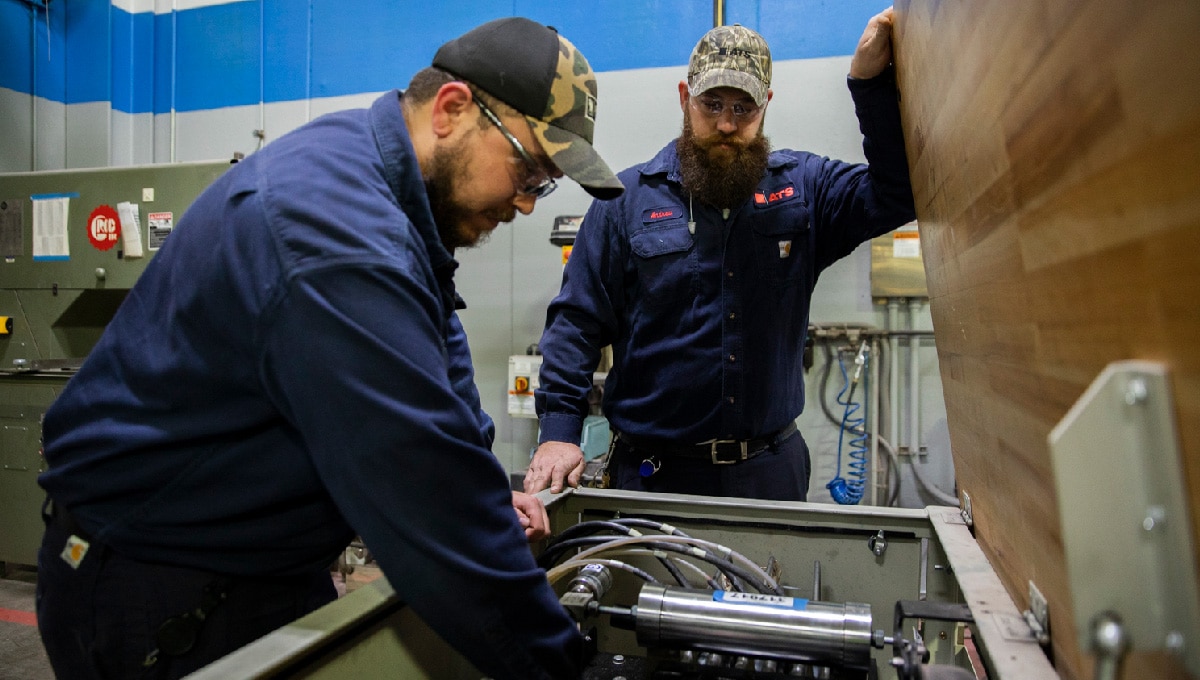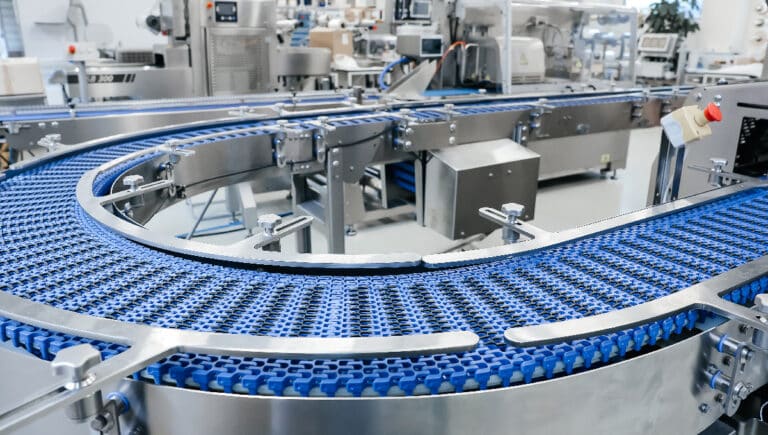In industrial environments, one of the most important decisions to be made is which approach to take regarding your maintenance needs. Maintenance teams can either follow a regular maintenance routine or wait for equipment to fail before initiating repairs. It’s critical to understand that choosing between these two options can change the trajectory of production, operational reliability and maintenance cost structure. A clear understanding of preventive vs. breakdown maintenance is essential to developing a maintenance strategy that optimizes performance, manages risk and supports long-term sustainability.
Many manufacturers invest in industrial preventive maintenance services, machine health monitoring, and a computerized maintenance management system (CMMS) to preserve machine uptime. Production schedules, after all, rely on uptime and availability. Other manufacturers lean on breakdown maintenance or reactive maintenance, hoping to reduce planning overhead. However, that approach often backfires due to unexpected costs, reputational damage and safety issues.
Read on for a more detailed understanding. In this blog, we will:
- Define both preventive maintenance and breakdown maintenance in clear terms.
- Examine how they differ in cost, risk, and operational impact.
- Weigh the pros and cons of each approach.
- Explore when it’s best to use one approach, the other, or a combination of both within a reliability-centered maintenance framework.
- Outline how to transition from a breakdown-centric approach to a more proactive, preventive or predictive maintenance model.
- Provide actionable best practices for maintenance teams.
After reading, you’ll better understand how to align your maintenance operation with business objectives and make informed decisions about maintenance tasks, maintenance cost, and resource allocation.
What is breakdown maintenance?
Breakdown maintenance refers to performing repairs only after equipment has failed or stopped functioning. It’s a reactive maintenance strategy: you wait until a component breaks before intervening. In some industries, it’s known as run to failure or unplanned breakdown maintenance.
Breakdown maintenance, unlike planned or scheduled interventions, omits routine inspections and preventive upkeep. Instead, operations continue until a failure occurs, forcing a corrective maintenance action to restore functionality. The philosophy is simple: defer maintenance costs until absolutely necessary.
Why organizations use breakdown maintenance
Some businesses adopt breakdown maintenance for the following reasons:
- Simplicity and low overhead: Minimal planning, administrative burden or resource allocation.
- Low short-term investment: No recurring labor, parts or monitoring costs for preventive tasks on noncritical assets.
- Acceptable for noncritical systems: Beneficial approach for inexpensive equipment or assets that do not affect production significantly.
- Perceived cost avoidance: Avoiding preventive spending until a problem forces action.
Risks of waiting until failure:
- Costly, unpredictable downtime: When a machine breaks, production halts.
- Emergency repair costs: Premium rates for parts, expedited shipping and overtime labor.
- Collateral damage: A failed component may damage related parts or systems.
- Shortened life for assets: Running to failure accelerates wear and stress.
- Safety hazards: Sudden failure can create unsafe operating conditions.
- Quality issues: Breakdowns may lead to rejections, contamination or rework.
- Customer impact: Repeated shutdowns harm on-time performance and client trust.
Historical context
Breakdown maintenance was common in earlier industrial eras when equipment was simpler and production expectations were lower. Today, with complex machinery and integrated supply chains, breakdowns can ripple across multiple production lines, distribution schedules, and customer commitments. Even minor downtime may trigger contractual penalties or lost opportunities.
There are limited scenarios where breakdown maintenance is acceptable. For example, light bulbs are typically run to failure because proactive replacement isn’t cost-effective. However, applying this philosophy to compressors, turbines, or robotic welders can lead to major setbacks.
Example scenario
A packaging line conveyor motor is allowed to run until it burns out. The line stops. Materials back up. Operators are idle. Maintenance scrambles for replacement parts and labor. Production delays ripple downstream. This is breakdown maintenance in action.
Key differences between preventive and breakdown maintenance
- Planning and predictability: Preventive maintenance requires scheduling, inspections and recurring maintenance tasks. Breakdown maintenance is unpredictable, with work triggered only by failures.
- Cost structure: Preventive maintenance involves higher planned costs but fewer emergencies. Breakdown maintenance looks cheaper short-term but escalates long-term expenses due to emergencies and lost production.
- Downtime, availability and uptime: Preventive maintenance results in short, planned downtime windows. Breakdown maintenance creates long, disruptive downtime that reduces uptime and availability.
- Safety and risk: Preventive approaches reduce accident potential. Breakdown failures may create hazards for employees and facilities.
- Asset lifecycle: Preventive maintenance extends the life of assets. Breakdown maintenance shortens asset lifespan through stress and uncontrolled wear.
Case comparison
There are always exceptions, but the following scenario is not atypical. Plant A practices preventive maintenance with a CMMS. Maintenance windows are scheduled, downtime is short and costs are predictable. Plant B runs equipment to failure, relying on corrective maintenance when machines stop. While Plant B spends less upfront, it faces unplanned downtime, rush orders after repairs and high overtime costs. Over a year, Plant A’s total maintenance cost is lower, even though it spends more on planned maintenance. This comparison highlights how proactive maintenance strategies can reduce total cost of ownership and improve operational reliability over time.
Pros and cons of preventive maintenance
Advantages of preventive maintenance:
- Improved uptime and stability
- Predictable maintenance cost budgeting
- Safer conditions for staff and equipment
- Extended asset life and stronger reliability
- Documentation for regulatory compliance
- Sustainability benefits through energy efficiency and reduced waste
Challenges of preventive maintenance:
- Upfront investment in schedules, systems and staff
- Risk of unnecessary replacement or over-servicing
- Complexity in scaling across many assets
- Resource allocation challenges
Example caution: Replacing belts on a fixed interval may discard healthy parts unnecessarily, inflating costs without adding value.
Pros and cons of breakdown maintenance
Advantages:
- Simple, low-overhead model
- Lower immediate maintenance spend
- Viable for inexpensive or non-critical equipment
Disadvantages:
- Unpredictable downtime and costly recovery
- Expensive emergency maintenance labor and parts
- Higher safety risk
- Accelerated wear and shortened asset life
- Potential quality issues and loss of customer trust
When to use preventive vs. breakdown maintenance
When trying to determine which maintenance approach is best for your plant, consider your asset classification framework:
- Critical assets: Require preventive or predictive maintenance because failure is unacceptable.
- Semi-critical assets: May combine preventive and condition-based maintenance depending on workload.
- Noncritical assets: Often suitable for breakdown maintenance if replacement is quick and inexpensive.
- Disposable assets: Run to failure intentionally because preventive care offers no return.
Example application: In a beverage plant, the filler machine is critical and needs preventive and predictive maintenance. Conveyors are semi-critical, benefiting from condition-based monitoring. Forklift batteries may be noncritical, replaced at failure. Office lighting is disposable and run to failure. This framework helps balance strategies without overburdening the maintenance team.
Transitioning from breakdown to preventive maintenance
To successfully transition to preventive maintenance, follow these typical steps:
- Asset criticality analysis: Rank assets by importance, failure impact and cost consequences.
- Deploy or enhance a CMMS: Use a computerized maintenance management system to coordinate scheduled maintenance, track history and manage tasks.
- Start with high-impact assets: Apply preventive maintenance to the most critical machines first, then scale gradually.
- Train the maintenance team: Build skills in preventive maintenance, data analysis and reliability-centered maintenance.
- Optimize maintenance tasks: Refine schedules, remove redundancy and balance preventive with predictive techniques.
- Track performance metrics: Monitor downtime, mean time between failures and maintenance cost trends to validate improvements.
Transitioning to preventive maintenance often requires a cultural shift, especially for teams used to reactive workflows. Teams accustomed to firefighting may initially resist scheduled maintenance. Leaders must communicate benefits: fewer emergencies, safer conditions, reduced stress, and recognition for proactive contributions.
Here’s a hypothetical example: A manufacturer facing repeated compressor failures adopted a CMMS and scheduled lubrication. Failures dropped 60% within a year, freeing resources to expand preventive programs across the plant.
Benefits of transitioning:
- Reduced machine downtime
- Lower lifetime maintenance cost
- Safer, more stable environments
- Predictable budgeting and resource use
- Strategic alignment of maintenance activity with business priorities
ATS supports these transitions by providing technology, training and maintenance management expertise.
Best practices and tips:
- Segment assets by criticality and assign suitable maintenance strategy.
- Document maintenance tasks consistently within a CMMS.
- Schedule preventive work during planned maintenance windows.
- Use root cause analysis after failures to improve preventive schedules.
- Collaborate with production operators to catch early warning signs.
- Rotate maintenance team members to build cross-functional skills.
- Track KPIs like OEE, MTBF, and MTTR to guide continuous improvement.
- Measure ROI in cost savings, uptime gains and reduced emergency maintenance.
Final thoughts
Preventive maintenance is a long-term investment in reliability, safety, and operational stability. Though it requires upfront planning, staff, and resources, it delivers extended asset life, predictable maintenance cost, fewer emergencies, and improved customer satisfaction.
While breakdown maintenance can be useful for low-value or non-critical assets, applying it to critical systems increases the likelihood of costly downtime, safety incidents and operational disruptions.
For most manufacturers, the best path forward is a hybrid maintenance strategy that incorporates preventive maintenance, breakdown maintenance, predictive maintenance, corrective maintenance, and condition-based maintenance. This layered model allows organizations to optimize each maintenance activity according to asset criticality and business objectives.
ATS provides industrial preventive maintenance services, machine health monitoring, CMMS support, and skilled maintenance operations. By partnering with ATS, companies can shift from reactive maintenance to proactive maintenance, reducing downtime, increasing uptime and availability, and strengthening their maintenance management practices. Contact us today to discuss how you can strengthen your maintenance strategy.






